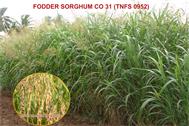7. Humidity is one of the most important factors (influenced, influencing) the crop growth.
8. Plants (producing, produced) flowers and fruit when days are short are known as short-day plants.
9. The crops (including, included) in the grass family are all cereals and most of forage grasses.
3. Translate from Russian into English. Use the Vocabulary Focus and text A of this Unit. Complete the task in written form.
а)
1. Имеются пропашные и не пропашные культуры.
2. Кукуруза растет в течение одного сезона.
3. Двулетние культуры не производят семена в первый год.
4. Кормовые культуры выращиваются как корм для скота.
5. Выращивая бобовые, мы можем повысить плодородие почвы.
6. Азот фиксируется бобовыми культурами.

b)
1. По продолжительности роста культуры классифицируются как однолетние, двулетние и многолетние.
2. Зерновые культуры, принадлежащие к семейству злаковых, являются ведущими пищевыми культурами.
3. Сходство частей растений используется как основа для ботанической классификации.
4. Азот фиксируется клубеньковыми бактериями, живущими на корнях бобовых.
5. Когда растительные остатки бобовых запахиваются, они повышают плодородие почвы.
6. Злаковые отличаются от бобовых видом корней.
4. Translate the following word combinations.
an important branch of economy, new and improved varieties, cultural practices, from the same area, control of pests and diseases, the only method used, seedbed preparation, achievements of biological sciences, practical experience, favourable environmental conditions, under warm conditions, growing season, frost-free period, average annual rainfall, world's leading cereal crops, cultivated crops, large-seeded legumes, plant residues, protein content, fibrous and tap roots.
5. Identify the fuction of the words ending in -ed. Translate the sentences.
1. The methods of yield increases used are effective.
2. The methods of yield increases used on our farm are highly effective.
3. The methods of yield increases are effectively used on most of our farms.
4. The improved methods of yield increases have been developed and are now being used on our collective farms.
5. Last year the farmers used new methods of yield increases.
6. The soil analyzed contained much nitrogen.








